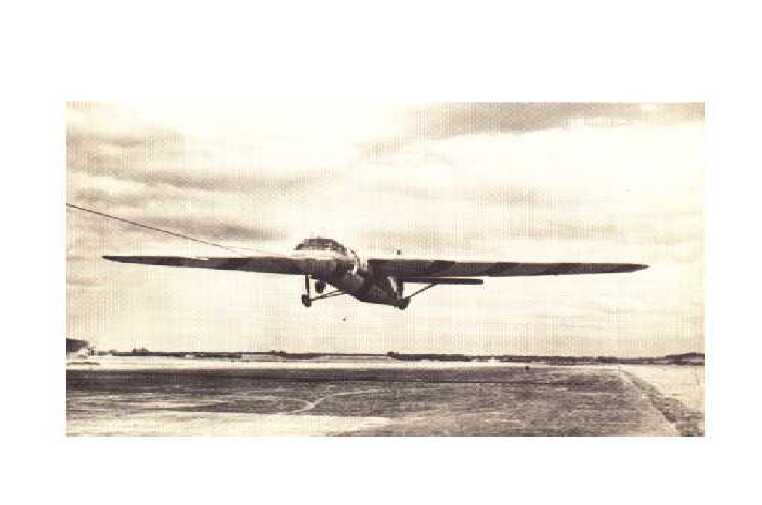
The role of the Glider would be crucial to the success of the mission, if the glider pilots could get close to the bridges then the battle would be half won. However if they were to go astray then the troops would have to march a long distance in a great deal of kit and the chance of success of the operation would be greatly reduced, that is, presuming that the troops were not captured by the Germans.

A Horsa Glider during take off.
It was therefore necessary for the glider pilots to know every second of their descent in to Normandy baring in mind that this operation would be taking place in the early hours of the morning under the cover of darkness. The problem was, though, for obvious reasons the pilots could not fly practice missions in France. A brilliant scheme was devised to allow the pilots to experience what it would be like to fly the mission; a scale model was made and using a cine camera, a film was made of a pilots' eye view. A model of a glider cockpit was then made and so the pilots could feel what it would be like to fly the mission. In addition to this virtual training, the pilots selected to fly on D Day flew forty three training fights together in the months leading up to the big day. These flights took place by day or by night and in every weather condition that nature threw at them, sometimes the pilots even flew blindfolded. They needed to know exactly when to turn and at what height, they could not rely on geographical signs. Their only instruments were a compass, altimeter and a stopwatch. Their aim was to land within thirty metres of the bridge and try and pierce the barbed wire with the glider's nose. Everybody knew that it was going to be hard and that is why the training was relentless.